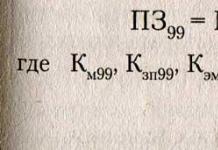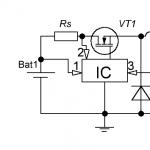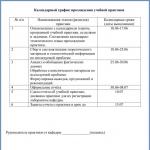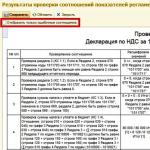Various household and other appliances require connection to the existing electrical wiring in the building. And often for this it is necessary to carry out special preparation of the wires. To make it easier to cope with this task, specialists often use this handy tool, like pliers for crimping tips. Not all home craftsmen are aware of this, so it will be useful for them to know what this type of press is, what types it comes in and how to handle it during repair and installation work.
General information
 As man created new types of technology, new types of cable connections for various purposes, power and conductivity appeared. In order to connect equipment in accordance with current requirements and standards, it is necessary to prepare the contacts of the leading wires in a special way. To do this, you need to properly crimp their tips.. This is precisely why special crimping pliers were created.
As man created new types of technology, new types of cable connections for various purposes, power and conductivity appeared. In order to connect equipment in accordance with current requirements and standards, it is necessary to prepare the contacts of the leading wires in a special way. To do this, you need to properly crimp their tips.. This is precisely why special crimping pliers were created.
This is one of the indispensable tools that many radio amateurs, auto mechanics and electricians must have in their arsenal. With the help of such pliers, you can perform crimping of contacts not only on ordinary cables, but also on specific connectors for non-standard connectors. Despite the fact that recent years range of instruments for carrying out electrical work has expanded significantly, pliers for crimping tips are still one of the most popular tools for performing such an operation. This is greatly facilitated by the low cost of their production, availability and high efficiency.
These pliers have a fairly simple design, thanks to which it is possible, even without special electrical knowledge, to crimp the tips. Such a press is a very reliable device with which you can crimp cables quite efficiently. This guarantees a strong connection between all conductors mi and directly the connecting structure.
Today, there are quite a large number of models of crimping tools on sale, which may differ not only in functionality, but also in cost. The latter may depend on several factors:
- press manufacturer;
- type of construction;
- quality and material of the final product.
Description of the tip
 Most cable lugs are marked with four letters - NSHVI. In the deciphered version, this abbreviation will sound like “insulated pin sleeve tip.” To put it in more understandable terms, this is a regular bushing for a flexible stranded wire. Its main purpose- protection of the end of the cable, which is used for fastening in the screw clamp terminal. After removing the insulation, a ferrule is put on the end of the cable, and then it is crimped with a special device. Most often, press jaws are used for this.
Most cable lugs are marked with four letters - NSHVI. In the deciphered version, this abbreviation will sound like “insulated pin sleeve tip.” To put it in more understandable terms, this is a regular bushing for a flexible stranded wire. Its main purpose- protection of the end of the cable, which is used for fastening in the screw clamp terminal. After removing the insulation, a ferrule is put on the end of the cable, and then it is crimped with a special device. Most often, press jaws are used for this.
The metal part of the tip is most often made of electrolytic copper. It has insulation only on the back side. The thickness of the insulator is noticeably larger than the diameter of the metal part of the tip. It looks like a cuff. The tip is attached over insulating coating wires. Its metal part is crimped, which fixes the cable core inside. When creating a connection between the tip and the screw clamp, the entire metal part is hidden in the device socket. Only the safe dielectric part of the cable is visible from the outside.
Tool types
 If you go into any store that sells electrical products, you will be amazed great variety crimping pliers offered there. Such a wide range due, among other things, to the fact that each manufacturer uses its own standard in production. This explains why such tools can have different functionality.
If you go into any store that sells electrical products, you will be amazed great variety crimping pliers offered there. Such a wide range due, among other things, to the fact that each manufacturer uses its own standard in production. This explains why such tools can have different functionality.
For example, in stores you can find highly specialized pliers designed for crimping wires of only a certain type, and a wider purpose tool with which you can crimp cables when connecting and repairing not only household appliances, but also production equipment. Every consumer should know about this and take this point into account when he goes to purchase a press for crimping tips.
Using crimping pliers, you can create a high-quality and safe electrical and mechanical connection. It is this feature that is one of the main characteristics of the classification of the instrument in question. It should be said What are crimping pliers? represent a class of pressing equipment. In most cases, they are used when working with low current systems to ensure reliable fixation of contacts.
Crimping pliers can be classified into several types depending on their purpose.
For removing cable sheath and insulation
By using similar type Using pliers, you can quickly and fairly accurately cut off a certain section of insulation on a wire, while maintaining the integrity of the core itself. Modern crimping pliers often have the ability to be adjusted to a certain diameter so that you can easily remove the insulation from the core without the risk of damaging it. This setup can be done in two ways:
- manually;
- automatically.
 When trying to manually select suitable diameter There remains a risk of error and damage to the wire. Therefore, it is best to make such adjustments automatically. Then you can be sure that the braid will be removed without negative consequences for cutting the cord. It is this type of preparation for crimping that is used when working with distribution and branch boxes. Special attention needs to be addressed cutting edge, which should be sharp. Then the outer insulation will be removed in one action without the risk of “chewing” the wire into the tool.
When trying to manually select suitable diameter There remains a risk of error and damage to the wire. Therefore, it is best to make such adjustments automatically. Then you can be sure that the braid will be removed without negative consequences for cutting the cord. It is this type of preparation for crimping that is used when working with distribution and branch boxes. Special attention needs to be addressed cutting edge, which should be sharp. Then the outer insulation will be removed in one action without the risk of “chewing” the wire into the tool.
For end sleeve press
For this type of operation, several types of hydraulic presses are offered for sale, which may differ in the shape of their sockets and the design of the tool. There are models in which the sockets are made with plastic flanges, but some can be made without them. They can have a trapezoidal shape or be designed for crimping square-shaped cores.
Pliers whose sockets are equipped with plastic flanges should be chosen when it is necessary to crimp the ends of a stranded wire. They will cope with this task perfectly thanks to square shape, which can ensure reliable fixation of all cores. This type of pliers is ideal for installation and centering of cables of any type of cross-section. If you need to perform more accurate and reliable crimping of contacts, you need to choose pliers with an emphasis on the cable diameter.
For insulated cable lugs
 If the wiring has insulated contacts, then you should choose a hydraulic press for crimping cable lugs oval shape. According to the standard, their matrix has three forms for the press, each of which corresponds specific color: red, blue and yellow. And each of these colors has its own tip, sleeves and other connectors for use with it.
If the wiring has insulated contacts, then you should choose a hydraulic press for crimping cable lugs oval shape. According to the standard, their matrix has three forms for the press, each of which corresponds specific color: red, blue and yellow. And each of these colors has its own tip, sleeves and other connectors for use with it.
About to do the crimping insulated wiring using a lug press of this type, care must be taken to ensure that the joint edge is positioned correctly. It should be located strictly in the middle of the upper profile of the pliers. Compliance with this condition has great value, since when placing the edge on the side, the reliability and tightness of the fixation of the electrical core will suffer.
 These pliers are designed to work with cables without insulation, as well as open conductors made of brass. The design of such a tool includes a special rod. The crimping is done strictly in the center, and the rod must be seated directly on the dividing seam. The pliers for crimping open tips made of brass have a slightly different design.
These pliers are designed to work with cables without insulation, as well as open conductors made of brass. The design of such a tool includes a special rod. The crimping is done strictly in the center, and the rod must be seated directly on the dividing seam. The pliers for crimping open tips made of brass have a slightly different design.
They have two types of clamps, among which one is designed for wire, and the second is for insulation. To perform the most reliable crimping of open contacts, it is recommended to attach a locator to them . This is very convenient device , with which you can ensure the exact position of the contacts. If the task is to crimp terminals, then it is best to do this with special pliers for pressing plugs.
Principle of use
Understand how crimping pliers work insulated tips Wiring is not that difficult. To do this, it is enough to know the nuances of the work process itself, during which the need to use them may arise. In addition to the wire whose contacts need to be crimped, you will need a crimping tool and a connecting element that is attached to the end of the contacts.

 During installation and repair of various household devices Often you have to work with wires. And for their high-quality implementation, it is often requires the creation of reliable and secure connections. It is impossible to solve such a problem without a specialized tool. Most often, crimping pliers are used for this purpose. Today such an instrument is available for sale in wide range, thanks to which you can choose the most suitable option taking into account the task facing the specialist.
During installation and repair of various household devices Often you have to work with wires. And for their high-quality implementation, it is often requires the creation of reliable and secure connections. It is impossible to solve such a problem without a specialized tool. Most often, crimping pliers are used for this purpose. Today such an instrument is available for sale in wide range, thanks to which you can choose the most suitable option taking into account the task facing the specialist.
However, the choice of pliers for crimping cable lugs is not the same. simple task, as it may seem at first. Even though you can find universal pliers in stores for performing such work, it is still recommended to choose a highly specialized tool that can guarantee the highest quality crimping of contacts. Accordingly, the crimping of the tips itself must be carried out by a specialist, since in order to carry out such work efficiently, it is necessary to have experience and knowledge.
For quality connections various wires and cables with sources and consumers of electricity, metal crimp lugs and sleeves are used. Their fastening to the ends of wire products is carried out using press pliers for crimping the tips.
Features of crimping pliers
The principle of operation of the tool is similar to the operation of pliers. The difference between crimping pliers for ferrules is complex profile pressing jaws. Crimping pliers or crimpers have various sizes and the shape of the landing bed. Each type of tool is designed for crimping wires and cables with a certain cross-section and number of cores.
Tools for crimping wire lugs and cable cores allow you to quickly and efficiently make switching connections between power units. The crimping process for cable lugs is quite simple. A sleeve is placed on the bare end of the wire or stranded wire. She is led into the opening of the ticks. Using the force of the fingers, the hands squeeze the levers of the tool, and the crimper compresses the sleeve with the wire.
Main types of ticks
Crimping pliers are divided into two types. The most common type is a design that works like pliers. That is, the sleeve is compressed on both sides. Other pliers are diaphragm crimpers.

Passatizhny
The tip is crimped in the same way as pliers grip a part. Work surface The matrix has cutouts into which the tip shank is threaded. This design is suitable for those fastenings that do not require special reliability.
To increase the compression force, hydraulic crimping tools for tips. Thanks to this improvement, the pliers became more efficient. The design uses cylinders with pistons filled with oil, which creates a large pressure of the matrices on the tip sleeve.

Important! Some crimpers are equipped with several types of removable matrices. The versatility of the tool eliminates the need for pliers for each conductor cross-sectional size.
The originality of the design of diaphragm crimpers lies in the comprehensive coverage of the tip shank. The principle of operation is similar to the movement of the aperture blades of photographic lenses. The only drawback of such devices is the impossibility of inserting pliers into the connection of the two ends of the wires.
Pay attention! The diaphragm tool is used as a press for pin or flat metal tips. The all-round clamp is much more effective than the plier type for covering the end switches of wire products.

Scope of application
Pliers for crimping wire lugs of certain designs are used depending on the cross-sectional composition of the cable product. The main areas of use of crimpers can be represented by the following list:
- stranded wires and thin-walled lugs;
- stranded wires and thick-walled lugs;
- lugs and large-section electrical cable;
- sequential crimping of wires;
- swage computer cables.
Stranded wires and thin-walled ferrules
Thin-walled lugs are used for small-section wires - from 0.5 to 3.5 mm2. The elements are marked NSHVI. The abbreviation stands for as follows:
- N – tip;
- Ш – pin;
- B – bushing;
- And - isolated.
NSHVI lugs are used for crimping copper stranded wires with subsequent insertion into the sockets of various electronic devices. The crimper handles are compressed until the spring mechanism of the device is activated.

Pay attention! Multi-stage clamp matrices allow you to work simultaneously with wires with a cross-section in the range indicated above. This eliminates the need for large quantities staple crimping hand tools.
Press pliers create a strong and reliable compression of the tips. Without them, one would have to twist stranded cores or solder the terminals of switchgear devices. The use of pressed end switches completely eliminates problems associated with breakage of thin wires, wire breakage, and the risk of short circuit.
Stranded wires and thick-walled ferrules
Thick-walled shanks are used for crimping multi-core power cables. Their maximum cross-section reaches 16 mm2. Press pliers PK-16 are used only for multi-core wires. The tool can compress the sleeve so tightly that it can easily break a single core.
The cable crimping process occurs in several stages:
- At the end of the wire, mark the length of the sleeve.
- Using special nippers, remove the insulation from the marked area.
- Place a piece of heat-shrinkable tubing so that it does not touch the exposed wire.
- The cleaned end of the cable is inserted into the sleeve. The insertion of the wire should be tight, but without force.
- The tip is crimped using pliers.
- The protruding veins are bitten off.
- Use a hair dryer to heat the heat shrink tube until it tightly grips the cable.

If the letter “U” is indicated in the marking of the tool, this means that the ratchet mechanism is located inside the handles, which creates a large force on the jaws of the crimper. The PK-16-U pliers compress more easily during cable crimping.
Large cross-section lugs and electrical cable
Crimping for ferrules electric cable large cross-sections are produced using a manual hydraulic press. Initially, the valve of the device is slightly open, and the rod slowly moves to its original position. At the beginning of the piston stroke, the valve opens completely, which ensures compression of the dies with great force.
In in-house equipment Large cross-section cables are rare. Mostly hydraulic pliers used for installing lugs on high-voltage cables for fastening them in panels industrial facilities. Hydraulic crimping pliers for dimensional lugs are also used for laying and switching power cables in power panels at the entrances of residential buildings, administrative buildings and civil buildings.
The hydraulic press is equipped with cassettes with replaceable dies. The upper lever is equipped with a magnet, which, after compression, returns the handle to its original position. The levers are equipped with rubberized shells, which ensure electrical safety of the device. Crimping of two cables with a double-sided sleeve is carried out during transfer electrical panel. These pliers for simultaneous crimping of two wires are also used when extending copper conductors with a diameter of 6-12 mm2.

Consistent wire crimping
This method is used when connecting sections of wires into a single whole. This is especially important for serial compression conductors with cores made of different metals. For example, when you need to make a bow of aluminum and copper wire, use a crimp sleeve.
The fact is that twisting metals of different names will cause destructive processes from their direct contact with each other. The connecting sleeve becomes a kind of bridge between aluminum and copper.
The bare wires are inserted into the sleeve on both sides. After this, the sleeve is compressed with pliers. The compressed sleeve prevents air from entering the connection, which prevents the occurrence of oxidation processes in the metal of the wires.
Computer cable crimping
Often the question arises of crimping an Internet cable to connect it to a computer or combining several PCs. local network. For this purpose, a twisted pair cable is used. The wires are unraveled and distributed parallel to each other. At the same time, the strict color arrangement of the wires is observed.
Plastic RJ-45 connectors are used as tips. Polymer tips are intended for insertion into hub sockets and network adapters. A twisted pair consists of eight wires. Insulated conductors twisted in pairs minimize interference when electric currents pass through them.

Special crimpers are used to crimp cable ends. The RJ-45 connector is a plastic box with an opening for the cable on one side and contact terminals on the other side.

The process of installing connectors on network cables is as follows:
- remove one centimeter of insulation, for this there is a special connector on the pliers;
- twisted pairs are unraveled and aligned in a certain order;
- Using wire cutters, cut the wires evenly so that the bare ends of the cores are formed;
- the wires are inserted into the RJ-45 connector, the cut wires with their cores should be tightly adjacent to the back of the terminals;
- The plastic connector is inserted into the opening of the pliers, then the tool handles are squeezed.
The twisted pair wires should be arranged from left to right in next order(looked from above from the entrance to the connector):
- White-orange.
- Orange.
- Green-white.
- Blue.
- Blue and white.
- Green.
- White-brown.
- Brown.
How to use crimping pliers correctly
Self-mastery of crimping pliers may initially be accompanied by the creation of a poor-quality connection between the sleeve or tip and the wire. It often happens that what appears to be a reliably performed crimp hides a bad contact. This can happen for two reasons.
If the shape of the terminals is not maintained
A discrepancy between the size of the tip or sleeve and the opening between the matrix jaws can cause distortion of the compressed element. Before you start crimping, you should try on the tip to the opening in the pliers. It is also important that the bare end of the wire fits tightly into the holes of the shank or sleeve.
A bundle of wires or a single core should fit into the connecting element with light tension. If you have any doubts about the reliability of the fastening, you should practice on separate sections of the cable. After crimping by hand, you need to check the strength of the connection. If there is the slightest play, the crimp should be rejected and crimping should be resumed with a different end cap.
Excessive clamping may damage the conductors inside the sleeve. The accompanying documentation for crimping pliers usually indicates the cross-sectional dimensions of the tips directly for each opening of the pliers. The use of connectors made of soft metal alloys should be avoided. Over time, the tip may lose strength and contact will become unreliable.
Twisting stranded wires before crimping
A mistake can be made due to the habit of twisting the wires, which is done before insulating or soldering manual connections. This is absolutely impossible to do.
You can check the harmfulness of twisting in a simple way. It is worth squeezing the twisted multi-core cables with pliers to ensure that there is deformation and damage to the integrity of the wiring.
If, when removing insulation from the cable installation section, twisted conductors are found, they must be straightened. Only after this the conductors are inserted into the opening of the tip or sleeve.
Color coding of tips
Color marking is used for NShVI tips. The color of the connector skirt corresponds to a specific wire cross-section:
- black – 1.5 mm2;
- blue – 2.5 mm2;
- gray – 4 mm2;
- yellow – 6 mm2;
- red – 10 mm2.
Color marking table for NShVI tips

Crimping wires using pliers cannot compare with hand twisting or soldering in terms of quality and speed of connections. For any connections you can always choose the desired model crimper.
Video
What to do if you don’t have special tools for crimping on hand or you just don’t want to buy them if you only need to crimp one or two tips?
Many people faced with this problem resort to in the wrong ways, which in the future only worsen the contact without providing a reliable connection.
They begin to flatten the tip with hammers, simply squeeze it in a bench vice, crush it with pliers, and press it in with a chisel. All these methods are incorrect and do not bring the desired result. 
After such amateur activity, poor contact is obtained with its further heating during operation. 
True, some manage to compress the tip with a hydraulic press so that the wire easily comes out of it, as soon as you pull it with a little effort.
There are other ways to crimp power wires with lugs using improvised means, which can be found in almost everyone’s garage or home.
Pressing with a center punch
The easiest and fastest way is pressing using a center punch. To do this you will need:

The process is very simple and straightforward:

In this case, there is no need, as many people do, to first flatten the tip with a hammer. During the strikes this will happen in any case.
The number of cores, that is, holes from the impact on the metal, depends on the length of the tip.
At the same time, on the back side of the tip, the crimping points should not be symmetrical to those on the front part, but shifted by a couple of millimeters.
The most important thing is not to perforate the tip and control the force of the blow. Therefore, if you use a 200mm nail for this, first of all you should dull it.
As a result, you will get sufficient contact, which of course is not comparable to crimping professional tool PGR-70, but in the absence of above-rated loads it will last a long time. 
The most important thing in this method is to choose the right cross-section of the wire and tip. The declared cross-section is very often smaller than the actual one.
For reliable contact, the wire must fit tightly inside the sleeve without any slack. That's why at the moment always checked manually, do not blindly trust the numbers on the cable sheath and on the tip blade. 
Connecting wire and lug by soldering
 There are others simple ways connecting lugs to wires without using a press. For radio amateurs who have no problems with solders and other devices, ordinary soldering is suitable.
There are others simple ways connecting lugs to wires without using a press. For radio amateurs who have no problems with solders and other devices, ordinary soldering is suitable.
This cannot quite be called crimping, but is still a method of connection without the use of a special crimping tool.
- The wire is tinned, and so is the tip inside. In this case, in its upper part, where the blade is, you need to drill a small hole in the sleeve.
- The stripped end of the cable is inserted inside, after which the entire structure (cable + tip) is wrapped with fiberglass tape.
- Heated gas burner and molten tin begins to pour into the hole from above.
- With constant heating with a burner, it will easily penetrate between the wire strands and the walls of the sleeve. The fiberglass will prevent the tin from leaking out.
 Some do it even simpler. They put tin inside the tip, heat the whole thing with a burner or even on a gas stove and then insert the tinned cable there.
Some do it even simpler. They put tin inside the tip, heat the whole thing with a burner or even on a gas stove and then insert the tinned cable there. 
To avoid damaging the insulation at the end of the wire, you can use a hair dryer to warm it up: 
Crimping with screw and vice
If you do not have soldering accessories, and you consider point crimping using a center punch not reliable enough, then the third method remains.
Select a long enough threaded screw so that it covers the pressed part of the sleeve. The diameter of the screw should not be large so as not to push through or crush the tip itself. 
Place this screw along the tip. Then you squeeze the entire structure in a vice. The end result should be approximately this form of pressing. 
If one screw is not enough, a second one is placed on top of the depressed one and compressed again.
You can initially use 2 screws, only installed with different sides sleeves. The main thing is not to overdo it and not break the sleeve. 
To prevent the screw from moving, you can fix it with electrical tape.
In general, to summarize, we can say that these three methods have the right to life, and many people connect wires this way only power cable and tips.
However, only factory specialized tool you can create a reliable and durable contact, which you will forget about immediately after crimping and it will not bother you during the entire period of work. 
-
- Of course, for the entire instrument (with the exception of some consumables) a warranty is provided for a period of 1 to 5 years, specifically for hydraulic presses - 3 years.
-
- At standard work It is recommended to change the oil at least once every two years. If you use the tool frequently, the oil needs to be changed more often. The frequency of oil changes is not difficult to determine - if the press starts pumping too slowly, or jerkily, then it’s time to check and add or replace the oil. When purchasing a hydraulic tool, you can immediately purchase “KVT” hydraulic oil for subsequent maintenance.
-
- The service life of a tool is a flexible concept. It depends on the intensity of use of the press - you compress two tips a day, two hundred or two thousand. From the size of the tips - if you crimp only tips with a cross-section of 25 mm², then the tool will last much longer than if you crimp tips with a cross-section of 150 mm². And so on.
According to international standards, the service life of a hydraulic tool is about 5,000 crimps, and for press tongs – up to 10,000. The actual service life of the KVT tool reaches 10,000 and 30,000 crimp tests, respectively. But that's not the main thing. The main thing is that when correct use tool and its timely maintenance (replacing o-rings, topping up and changing oil), the KVT tool is provided with a warranty of three to five years (depending on the type of product), which best characterizes its service life.
- The service life of a tool is a flexible concept. It depends on the intensity of use of the press - you compress two tips a day, two hundred or two thousand. From the size of the tips - if you crimp only tips with a cross-section of 25 mm², then the tool will last much longer than if you crimp tips with a cross-section of 150 mm². And so on.
-
- Yes, they do. In models PGR-300 "KVT", PGRs-300 "KVT", PGRs-300A "KVT", PGRs-300AM "KVT", PGP-300 "KVT" and PGP-300A "KVT" the matrices are the same. Also, sets of high-precision matrices of the NM-300 “KVT” series are suitable for all these tools.
-
- The matrices in these tools are made according to a certain “average standard”, which allows crimping of aluminum and copper tips and sleeves made both according to Russian GOST standards and to the DIN standard. The quality of crimping with such dies meets all requirements and has been verified by many years of tool sales. But if you need to crimp the tip and are guaranteed to get professional result, then we recommend using specialized high-precision dies of the NM-300 “KVT” series, designed for crimping certain series of tips.
-
- It all depends on the type of quick-release connections used. If they match each other, then it is possible. The couplings used on tools of the KVT brand have the following characteristics: M22 thread with a pitch of 1.25. If your pump or press has the same thread, then it can be used with KVT equipment.
-
- Can. But to do this, you need to remove the fixed handle from hydraulic presses, drain the oil, remove the rubber container, and only then adjust the valve. There is no need to drain the oil from the pumps, but you will have to partially disassemble the housing. Plus, the valve must be set correctly, which is quite difficult without practice. Based on this, it is better to leave the valve adjustment to the service center specialists.
-
- Each tool has its own advantages and depends on the frequency and conditions of its use.
For example, a mechanical tool can be used at any temperature (including negative), while a hydraulic tool can only be used at temperatures from -15 to +50 °C (the KVT tool uses frost-resistant oil). Mechanical tools require minimal maintenance and the risk of breakage is extremely low. With some mechanical tools you can crimp the tip faster - just press the handles together once.
It is more profitable to use a hydraulic tool if you use it frequently - it is much easier physically to work with hydraulics. Most KVT hydraulic presses are equipped with a two-speed pump mechanism, which significantly saves time during crimping. The automatic pressure release valve in PGRs models protects the tool from damage.
In short, the choice between hydraulics and mechanics can only be made by a person, knowledgeable operation of the tool.
- Each tool has its own advantages and depends on the frequency and conditions of its use.
-
- Any work should be carried out on a disconnected line. If absolutely necessary, you can use special tool, designed to operate under voltage and marked accordingly. Today, there is no such tool in the KVT product line.
-
- The decision to purchase a mechanical or hydraulic tool can be made by a person who knows in what conditions the tool will be used. IN in this case, an all-weather and all-season mechanical tool, requires minimal maintenance, is practically not susceptible to breakdowns and works faster (if equipped). physical strength) than hydraulics.
-
- These are specially designed high-precision dies for crimping completely specific series or standards of tips. 99% of dies in inexpensive tools are made according to some “average standard”, and they can be used for crimping different tips, but the quality of crimping will still not reach professional level. Until now, specialized matrices at a price of about 80 euros per pair (of one standard size) were only available from large European manufacturers. Now they are also in our assortment. The matrices come to the most popular models hydraulic tools - presses PGR-300, PGRs-300, PGRs-300A, PGRs-300AM, PGP-300 and PGP-300A. If you clearly know which tips or sleeves you will use, and the guaranteed quality of the work performed is important to you, then the NM-300 “KVT” series matrices are your choice!
-
- Such dies are used for crimping various tension, connecting and contact fittings and are manufactured to order. There are four types of dies for each tool: round die “A” for crimping aluminum clamps (example designation A-24/PG-60 tons, A-54/PG-100 tons); round die “S” for crimping steel clamps (example designation S-17/PG-60 tons, S-44/PG-100 tons) hexagonal die “MSh-A” for crimping aluminum clamps (example designation MSh-13.8- A/PG-60 tons, MSh-60-A/PG-100 tons); hexagonal matrix “MSh-S” for crimping steel clamps (example designation MSh-32-S/PG-60 tons, MSh-48-S/PG-100 tons); To order matrices, you must indicate them inner size(depending on the fittings being pressed) and what press it is needed for. The production time for matrices is about two weeks.
-
- The main difference between the KVT tool is that assembly and quality control are carried out entirely at the Kaluga KVT plant. Particularly critical parts are also produced at the factory; other components are obtained from third-party companies. The resemblance to instruments from other manufacturers or sellers ends in appearance, and that’s only if you don’t look closely. Most of the parts from which the tool is assembled differ from similar parts of tools from other manufacturers, which has been repeatedly verified when we have been contacted with requests to repair third-party tools. We make every effort to ensure that the tool is reliable and of high quality. Work is constantly underway to modernize and improve existing models. The KVT tool provides warranty repairs and post-warranty service.
Professional press pliers for tips are presented in the form of a mechanical tool that allows you to ensure a reliable connection of two elements. Externally, their design most closely resembles ordinary pliers, but instead of smooth jaws, specific relief matrices are used. Their functionality designed for different shapes and diameters of crimp parts.
Brief description
Long-term operation electrical networks largely depends on how well all the connections between the conductors were made. That is why crimping products have become widespread, with which you can achieve the most reliable connections one-piece type. During this procedure, the strands of the prepared wires are carefully compressed in special sleeves made of aluminum or copper. In order for the result to be of high quality, the master must apply great compression force, provided by crimping pliers.
 Such a tool is often called a crimper, since many manufacturers equip the unit with replaceable matrices with profiles that match both the conductors and the insulation. On sale you can find quite large sets of such devices, where every master will find everything necessary for high-quality work.
Such a tool is often called a crimper, since many manufacturers equip the unit with replaceable matrices with profiles that match both the conductors and the insulation. On sale you can find quite large sets of such devices, where every master will find everything necessary for high-quality work.
Most often, modern professionals use a mechanically driven crimping tool. Such units are equally effective in both industrial and domestic industries. Of course, if necessary, you can purchase more powerful press jaws, where the main work is performed by a hydraulic drive. With their help you can process cables with large diameter and cross-sectional area from 120 mm².
Universal press pliers for crimping sleeves and tips consist of two basic parts:
- The fixed element is a matrix, which is presented in the form of a curly brace, providing the necessary deformation of the material.
- The moving part is a specific punch, without which high-quality extrusion on the sleeve cannot occur.
The matrices are selected in strict accordance with the diameter of the tip. Depending on the model used, all settings occur through fine adjustment or replacement of the part itself. Standard domestic installation Such a tool is made in the form of non-removable shaped jaws, which are designed for quickly crimping different-sized cartridges.
 IN removable models ticks is of great importance right choice working area, which necessarily includes a matrix, as well as a punch. If the master made any mistake, then the final connection will be extremely low, and normal contact will simply be unavailable. In addition, the compression force also needs to be measured. After all, excessive pressure will rupture the sleeve, which will make it unsuitable for further use. But a weak crimp, on the contrary, will not be able to provide high-quality contact; the final contact will be extremely unreliable.
IN removable models ticks is of great importance right choice working area, which necessarily includes a matrix, as well as a punch. If the master made any mistake, then the final connection will be extremely low, and normal contact will simply be unavailable. In addition, the compression force also needs to be measured. After all, excessive pressure will rupture the sleeve, which will make it unsuitable for further use. But a weak crimp, on the contrary, will not be able to provide high-quality contact; the final contact will be extremely unreliable.
It is worth noting that recently craftsmen have been actively using manual press pliers of the PK-16 brand, which are manufactured by the KVT company. The thing is that such devices have the simplest design, a high degree of endurance, and they are also very convenient to use. The tool is completely free of unnecessary auxiliary functions, due to which it is included in the list of the most popular budget options.
Areas of application
Crimping pliers are actively used by both beginners and more experienced radio amateurs, as well as electricians and auto mechanics. Such units are simply irreplaceable in situations where it is necessary to process the contacts of standard cables and professional connectors with an unusual connector (this category includes a network cable for a PC).
 Light and simple design such crimpers gives each master the opportunity to complete the task as quickly and efficiently as possible. The device is guaranteed to provide reliable and tight crimping of the workpiece, thereby achieving the highest degree of contact between the connecting element and the conductor. The price of the unit directly depends on the manufacturer, type of design and quality.
Light and simple design such crimpers gives each master the opportunity to complete the task as quickly and efficiently as possible. The device is guaranteed to provide reliable and tight crimping of the workpiece, thereby achieving the highest degree of contact between the connecting element and the conductor. The price of the unit directly depends on the manufacturer, type of design and quality.
It is worth noting that Press pliers do an excellent job of crimping insulated wires:
- NSHKI - pin round lugs.
- GSI - connecting sleeves.
- NKI - ring type tips.
- RPI-P, RSHI-P, RPI-M, RSHI-M - flat and plug connectors.
- OV - piercing type couplers.
Crimping units are actively used for flexible wire cores during the connection process circuit breakers, chandeliers, sockets and lamps. Professional crimping of connecting sleeves in the industrial sector is carried out using universal hydraulic pliers. Such units are designed for cable cores with a cross-section from 16 to 240 sq. mm.
Design differences
Universal press pliers are designed to work with sleeves and tips, the cross-section of which can vary over a wide range. In the household and industrial sectors, the most common are considered parts with an indicator from 1.5 to 16 mm². The special design allows you to accurately press the metal of the tip (sleeve) into conductors conductor. The final result depends on the required depth and application profile.
Some models are equipped with a ratcheting mechanism, due to which the handle of the unit is compressed until the crimping is complete. At the final stage, the dog is activated and the inverter mode is turned off. In such a situation, the master simply will not be able to squeeze the handle, since the jaws of the tool are not fully opened. In addition, the unit can be equipped with a side swivel wheel, which disables the locking if necessary.

Each tool jaw is equipped with working areas with the most different profiles. This technical solution allows craftsmen to crimp any types of tips and sleeves with a standard cross-section. For more comfortable work, each zone is marked with its own number or a special mark, thereby preventing errors associated with the wrong choice of size.
 Products PK-16 are not at all different from their analogues in any way design features. But the presence of longer handles allows you to work comfortably for a long period of time without exerting much effort.
Products PK-16 are not at all different from their analogues in any way design features. But the presence of longer handles allows you to work comfortably for a long period of time without exerting much effort.
If the master decides to use the production zone with numbers 1.5 and 6.0, then he will need a little pressure of one hand to ensure that the result is of the highest quality. But for zones 10 and 16 it is necessary to use the strength of two hands. It is worth noting that if a specialist most often works with large tips and sleeves, then it is better for him to buy a more powerful and larger unit.
Types of crimping units
Many modern manufacturers produce crimping jaws based on various standards. The buyer can always purchase accessible tool with a narrow scope of application (pressing a certain type of cable) or universal models. That is why even before purchasing it is necessary to decide what work the unit will perform.

Rules for using the tool
Despite the fact that many novice craftsmen consider crimping quite simple view work, but even in this business there are technical specifications, on which the quality of this procedure depends. The correct choice of unit is of great importance, since it must have optimal compression force, which will be quite sufficient for the sleeve used.
The highest quality and most reliable contact is created between those wires that are connected to each other thanks to crimping. To ensure that the result meets all requirements, you must adhere to certain rules:

Larger sleeves with a cross-section of 10 or 16 mm² can only be crimped at certain intervals. Otherwise, frequent exposure to excessive loads may deform the tool, making it unsuitable for further use.
Key Benefits
Many people believe that for connecting lugs and wires of small cross-section crimping pliers are not needed at all, because they can be replaced with ordinary pliers. Of course, such a way out of the situation is quite accessible, but it will no longer be possible to achieve such high quality as with mites. And all because the pliers matrices ensure that the tip adheres too tightly to the core, thereby preventing the penetration of water and air. Due to this, metal oxidation can be eliminated, which is especially important when working with copper parts.

When using pliers, gaps are formed where dust, moisture and any debris can easily enter. The quality of contact will be reduced several times, and this is fraught with an increase in current resistance. The veins are pinched too much, which disrupts their cross-section. Over time, some of them will thin out or simply fall off, reducing signal conductivity.

















